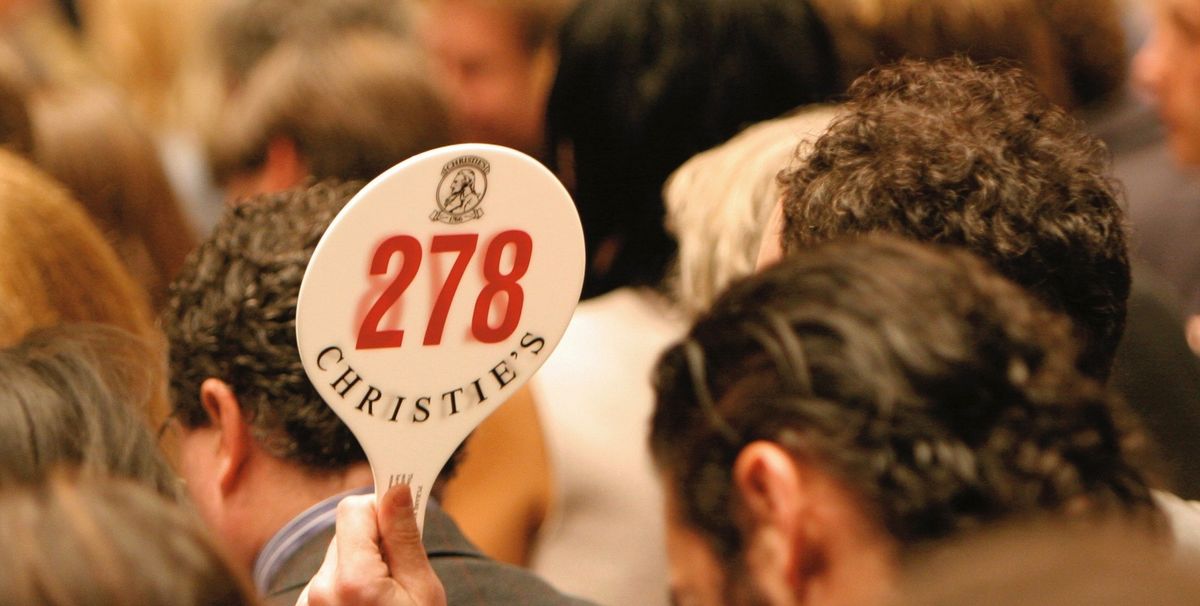There has been a new twist to an eight-year old legal battle between Christie’s and France's associations of antique dealers and galleries. A French court stated on 24 March that artist's resale rights must be paid by sellers, with no exception. Saying that the ruling might hurt the contemporary art market, the auction house is now challenging the judgement in front of the high court.
The feud, which has already resulted in several contradictory judgements, began in 2009 at the €375m Yves Saint Laurent-Pierre Bergé sale, when Christie’s demanded the buyers pay the resale rights owed to contemporary artists. The auction house pointed out that such a move would be a stimulus for the market and would "help collectors sell their work in France" rather than in New York, where no such royalty is applied. In Britain, the choice is left to the company in charge of the sale.
The problem lies in that French law states that the charges had to be paid by the sellers. So the Syndicat National des antiquaires (SNA), joined by the Comité des galeries d’art, launched a lawsuit against Christie’s for unfair competition and abuse of its dominant position. "If everyone follows the law and Christie’s decides not to, it obviously gives the company an unfair advantage in attracting collectors", said Patrick Bongers, from the Galerie Carré, then president of this gallery owners’ union.
The SNA first lost the case but then won on appeal in 2012. Christie’s turned to the Supreme Court arguing that the judgement contradicted the European Directive on the matter. Consulted in 2015, the Court of Justice of the European Union stated that if sellers were made responsible for the payment of royalties, each State could accept derogations. By contract, the seller could transfer this responsibility to the buyer. The French supreme court then considered the royalty could be in effect collected from the buyer or the seller, or shared by them, "as long as the artists’ rights were duly respected".
The case came back to the court of appeal of Versailles, which expressed a different opinion on 24 March. The court now states that even if France was authorised to derogate from the rule, the government and the parliament chose not to. "The lawmakers, says the court, required the seller to pay the royalty" not only as a simple method of payment, but "in order to safeguard healthy competition between the national operators." The president of the SNA, Mathias Ary Jan says he is "very happy with this judgement, which protects dealers against disloyal competition from the auction houses as well as the rights of collectors who were illegally charged with this payment". Christie’s already announced it will go back—once more—to the Supreme Court. But buyers can already demand that the company and other auctioneers rescind their payments. Since 2010, Christie’s has chosen to apply the old system until the case was settled. Other auctioneers have requested sellers to pay for the artists’ rights since the 2015 Supreme Court opinion.
Adopted in France in 1920 to help artists during a euphoric growth period at the Drouot auction house, artist's resale rights pay artists or their heirs a marginal revenue for the resale of their works for 70 years after their deaths. It is now applied in 65 countries, including European Union members, but not in the two major markets for living art, the US and China. Auctioneers and dealers complain that it adds to the burden of taxes, but it did not prevent UK sales of post-war and contemporary art from doubling in value since 2009.
In France, until 2007, the rate was fixed at 3%. Under European rules, it now follows a sliding scale, from 4% up to €50,000 to 0.25% in excess of €500,000. To lessen the imbalance in global competition, the amount has also been capped at €12,500. Around €20m is collected each year in France.


